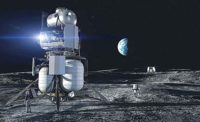On Sept. 18, 2013, the unmanned Cygnus cargo spacecraft was launched into orbit for the first time. Shortly thereafter, it reached and docked with the International Space Station (ISS). Two more Cygnus spacecraft made trips to the ISS in January and July 2014, respectively.
None of these missions would have been possible without the Antares rocket, which launches the spacecraft (carrying a payload up to 11,000 pounds) into low-Earth orbit. Orbital Sciences Corp. designs and builds the rockets and spacecraft for NASA’s Commercial Orbital Transportation Services developmental program.
The Antares rocket is assembled in the horizontal position within NASA’s Wallops Flight Facility, located in Wallops Island, VA. Workers use one or two overhead cranes to lift, move or rotate sections of the rocket into position for assembly. The 70-ton-capacity main crane lifts the rocket at its center, while the 50-ton-capacity supplemental crane lifts the rocket near its tail. Radio control enables tandem operation of the cranes as necessary.
When finished, the rocket is 133 to 137 feet long and weighs 530,000 pounds. It is rolled out of the Wallops building to a nearby spaceport pad, positioned vertically and, shortly thereafter, launched.
Whiting Corp. custom designed and built both overhead cranes to meet NASA Critical Lift STD-8719.9. This standard requires that all lifting devices and equipment provide optimum precision, reliability and safety during rocket assembly.
Whiting manufactures the cranes to material, quality control and safety standards that are much more stringent than those followed for the typical commercial-quality crane, claims Alan Horgan, crane product group supervisor for the Whiting Corp. Quality control includes failure modes effect analysis, safety analysis and AWS-based inspection of all critical-load weld paths.
The cranes’ key feature is a variable frequency drive that provides precise motor speed control. Drip pans and debris shields keep the cranes pristine enough for use in clean rooms. Grounding straps prevent sparks when the cranes handle explosive materials.
Assembly of Cygnus spacecraft service modules is done at Orbital’s Dulles, VA, manufacturing facility. Each service module features avionics systems from Orbital’s LEOStar and GEOStar satellites, and propulsion systems from GEOStar satellites.
Module assembly is done manually, except for lifting equipment to move workers or large subassemblies into place. Assembly lasts 16 months and requires two crews of seven assemblers each working 11 shifts per week. It takes place in a small Class 10,000 clean room, a large Class 100,000 clean room, and a large assembly and integration bay.
The Class 10,000 room consists of 30-day workcells, where workers assemble tiny to moderate-sized subassemblies, including all electronics. The Class 100,000 room and the assembly and integration bay feature four- to six-month workcells, where subassemblies are joined and tested.
Each module spends seven days in the vibration area, where Orbital duplicates the acoustic and vibration conditions the module might encounter in space. After this, the module spends 13 days in the thermal vacuum area. Finally, the spacecraft’s fuel tanks are pressurized with helium to check for leaks and to test the function of the pressure gauges. For safety reasons, this last test is done in a blast cage.
For more information on custom overhead cranes, call 800-861-5744 or visit www.whitingcorp.com.





